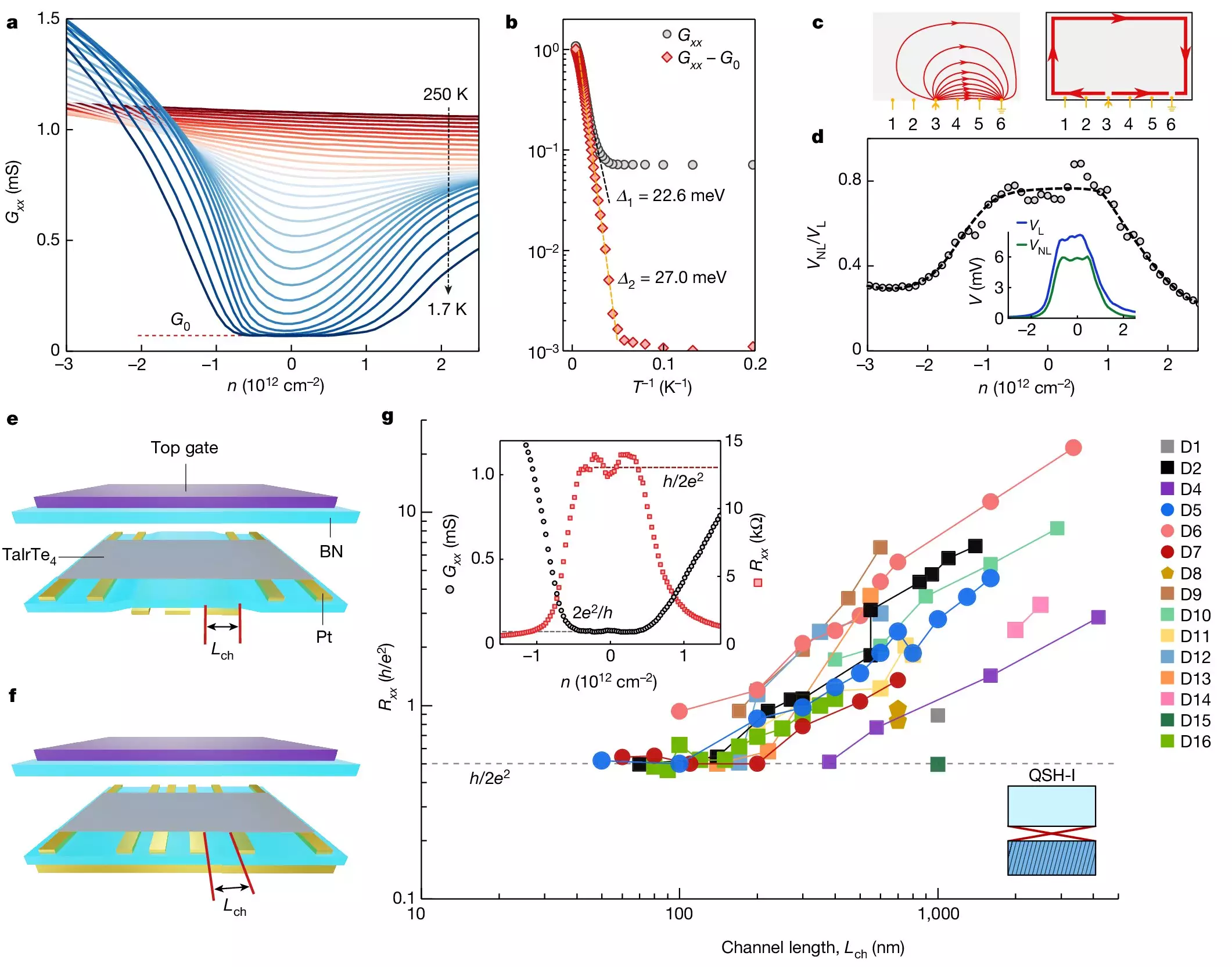The recent discovery of dual topological phases in an intrinsic monolayer crystal marks a significant breakthrough in the realm of quantum materials. An international team of researchers led by physicists from Boston College reported this groundbreaking finding in the online edition of Nature. This revelation sheds light on new rule-bending properties within the quantum realm, introducing a dual topological insulating state that paves the way for exploring exotic quantum phases and electromagnetism.
The team, spearheaded by Boston College’s Assistant Professor of Physics Qiong Ma, focused their attention on a crystalline material known as TaIrTe4. By creating atomically thin samples of TaIrTe4 and developing electronic devices, the researchers uncovered not one but two distinct topological insulating states within the material. This unexpected discovery defied existing theoretical predictions and introduced what the team referred to as the dual topological insulator or the dual quantum spin Hall insulator.
Experimental Techniques
The crystalline material TaIrTe4 consists of exceptionally thin, two-dimensional layers that are less than 1 nanometer thick. To investigate the material’s electrical conductivity, the researchers utilized advanced nanofabrication techniques such as photolithography and electron beam lithography to establish nano-sized electrical contacts. By manipulating specific parameters, such as gate voltages, the team was able to observe TaIrTe4’s transition between the two distinct topological states.
Unexpected Results
In a surprising turn of events, the researchers found that beyond a certain point of adding electrons to the material, the interior became insulating again, with electrical conduction occurring only at the boundaries. This unexpected behavior led to the emergence of a second topological insulating phase, exceeding the initial theoretical predictions. The transition between these two phases showcased the unique and complex nature of TaIrTe4 as a two-dimensional topological insulator.
The discovery of dual topological phases in the monolayer crystal opens up new avenues for research and development in the field of quantum materials. The researchers plan to collaborate with experts in specialized techniques, such as nanoscale imaging probes, to further unravel the intricate properties of TaIrTe4. Additionally, efforts will be focused on refining the material’s quality to enhance its dissipationless topological conduction and exploring the creation of heterostructures based on this novel material.
The identification of dual topological phases in an intrinsic monolayer crystal represents a significant advancement in the study of quantum materials. The unexpected discovery of the dual topological insulating state within TaIrTe4 challenges existing theoretical frameworks and offers a platform for delving into uncharted territories of quantum physics. As researchers continue to probe the complexities of this unique material, the potential for developing innovative energy-efficient electronic devices looms on the horizon.


Leave a Reply